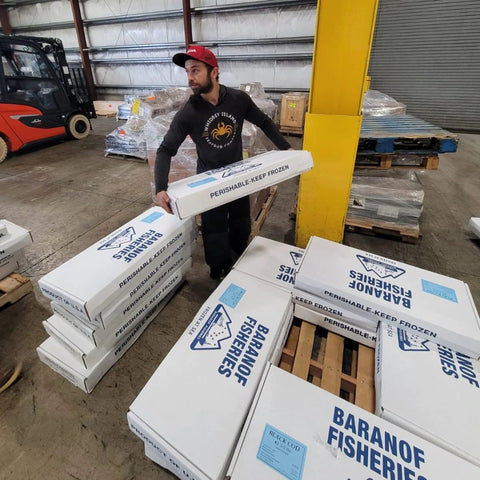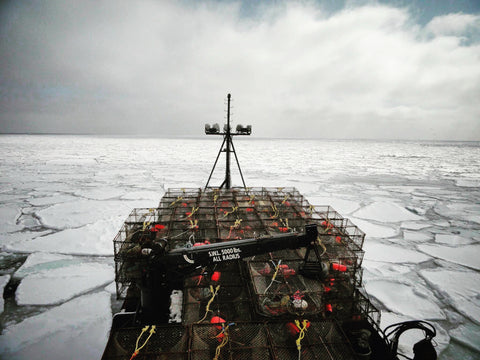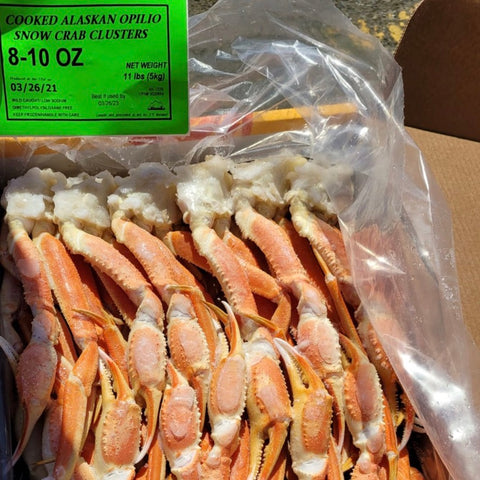Watchful Eye - How To Be Sure Seafood is From A Sustainable Fishery

When it comes to wild caught seafood, sustainability is something most of us consumers look for when purchasing. Everyone claims their products are harvested under sustainable methods. What makes it sustainable? How do we know they are harvesting under sustainable practices? Are the harvesters monitored and reported?
When looking to purchase sustainably harvested seafood, you first want to start with wild-caught in the USA. The United States with NOAA and NMFS (National Marine Fisheries Services) have the world's most well managed and monitored commercial fishing industries. Alaska with its onboard and video monitoring system is known to be the best managed fishery location in the world.
Management and Data Tracking
To have sustainable fish stocks you need tight oversight, including management and data tracking on fish and crab stocks to prevent over-harvesting. Most countries around the world do not have onboard monitoring systems and don't keep records of catch, set limits or quotas. This leads to a ton of illegal and unreported fishing, and the fastest way to deplete and overfish the stocks.
Harvesting Equipment
Another important factor to sustainably caught seafood is the gear type used to harvest the fish. Any fisheries with high amounts of by catch (anything that isn't your target species) is hard on fish stocks as it is usually not well maintained and in some cases dumped into the ocean. Trawling and ‘pursue seine’ are two of the most destructive, dirty and unsuitable fisheries catching thousands and thousands of pounds at time in a large net collecting anything in its path. More sustainable methods like pots, trolling and long-lining don't harm the seafloor and have less by-catch, allowing fishermen to release what little bycatch is originally caught.
Observer Programs
What makes Alaska one of the most sustainable and well managed fisheries in the world is the NMFS observer program. Almost all vessels fishing in Alaska for any species are required to have an onboard trained NMFS observer or video monitoring system. The observers are on the vessel to record, monitor and report the vessel's harvesting and fishing practices. They sample the catch record and report data everyday. They also monitor for pollution and fishing violations. Vessels are also equipped with cameras and scales that record and monitor the catch weights and fishing activities. They make sure fishermen are only harvesting target species as too much by catch of a certain species is a violation.
Quotas and Enforcement
Alaska also enforces very strict reporting and landing of fish caught in its waters. All catch, including the amount of bycatch, must be recorded and reported each day. Alaska sets strict quotas for each species that are set by scientists based on survey data. They set these quotas to allow for sustainable harvest so there is no overfishing. They assess the stock of the species juveniles, males and females and come up with a total allowable catch for each year. Their goal is true sustainability, preventing overfishing.
As a consumer, buying seafood that comes from properly monitored fisheries with thorough regulations and reporting will help the health of the ocean overall. If there is no market for illegal, unreported and monitored seafood, it will stop being sold in open markets. Consumers have the power to influence change making for healthier fish stocks across the globe.
It doesn’t hurt to question typical ‘marketing jargon’ found in your local seafood market. When companies or your local fishmonger tell you that their seafood is sustainably harvested ask them how and why? What makes it sustainable?
You want seafood harvested under a watchful eye.


